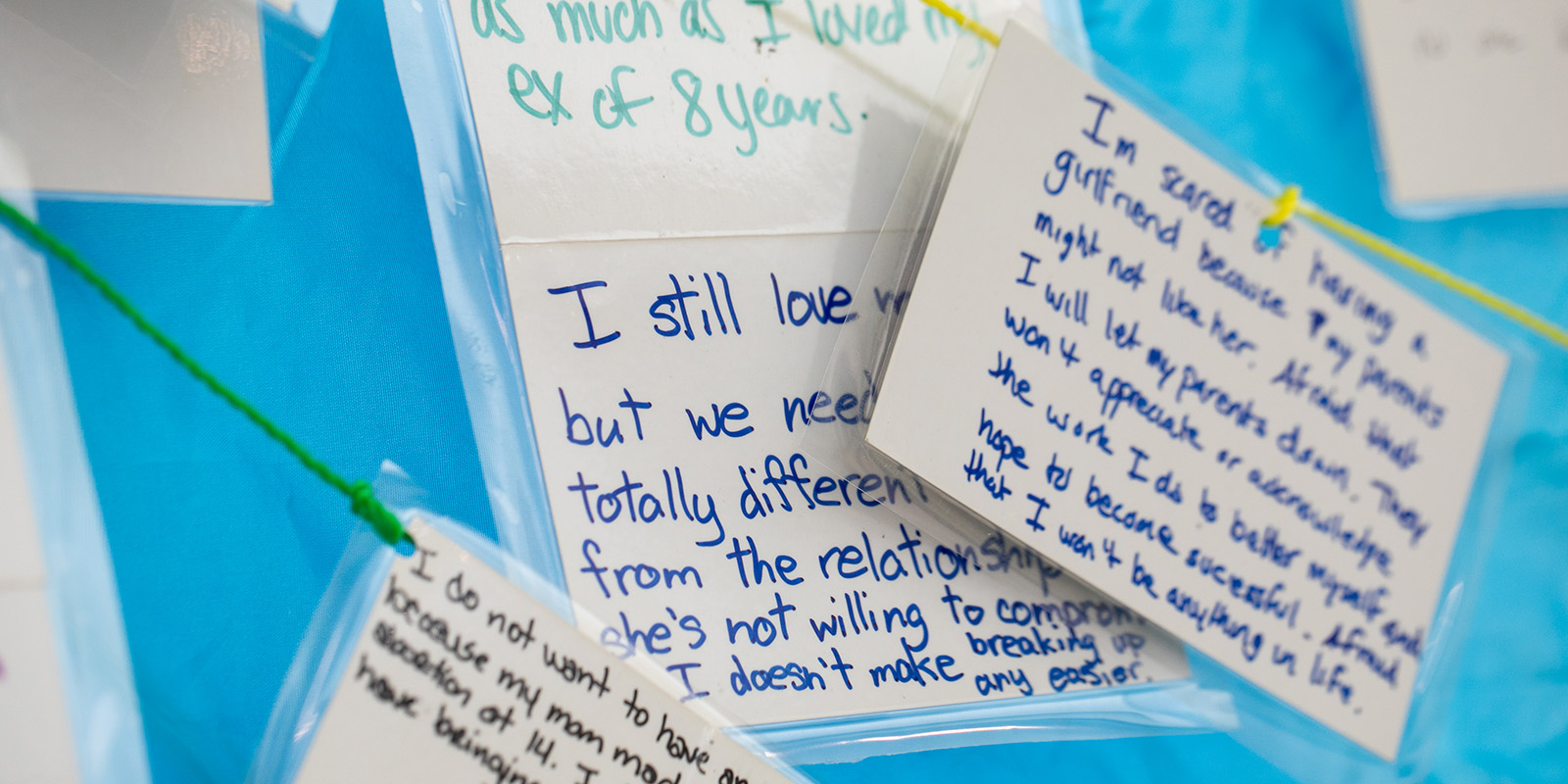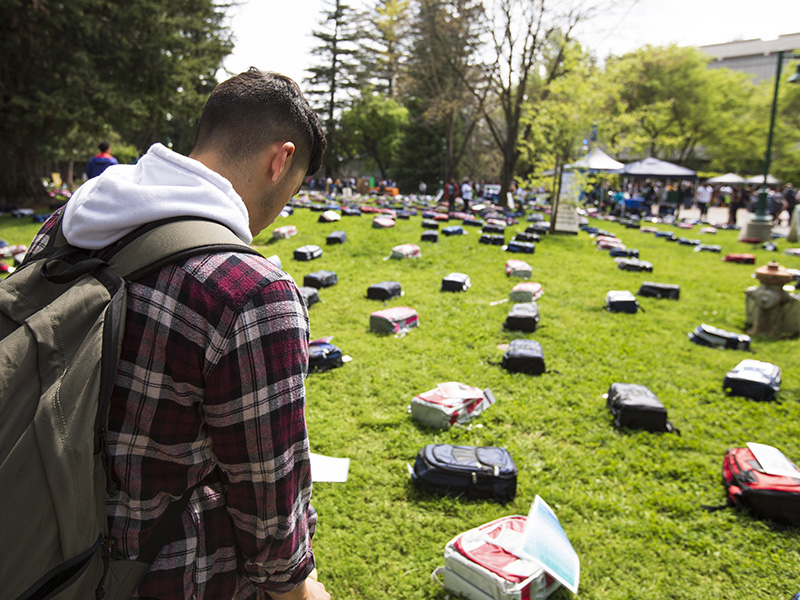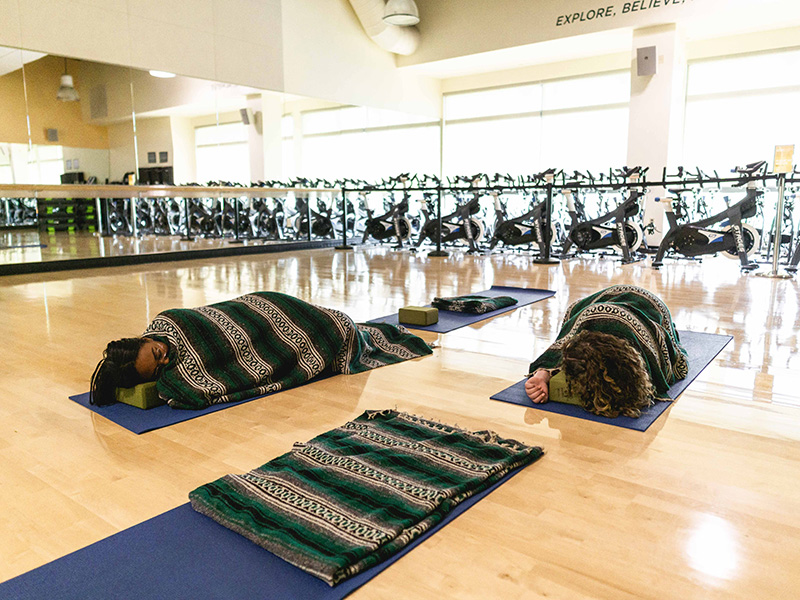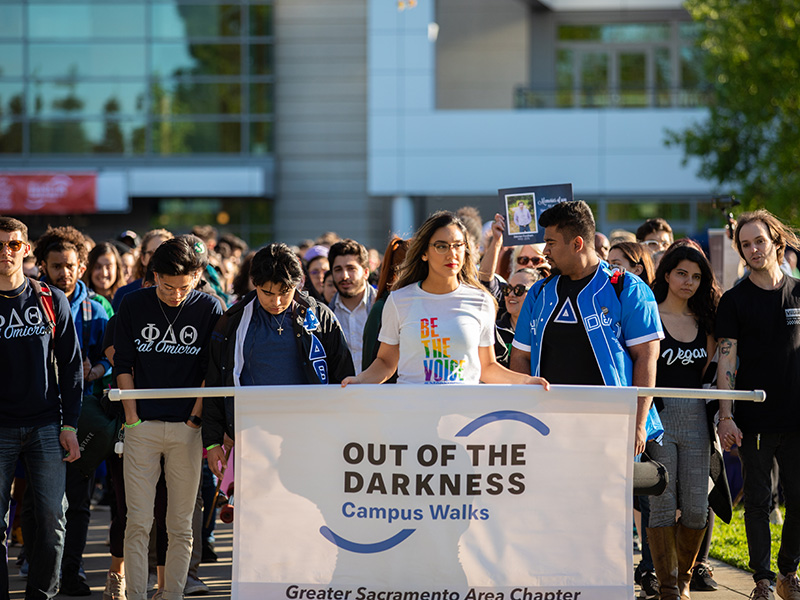Story Content
Emotional Rescue
When minds and emotions face challenges, the University responds

December 18, 2020
“Students spend so much time in the electronic world that they don’t have traditional conversations”
College is a launching pad for finding independence and building a future. But for many students, the transition is as jarring as it is exciting.
Making new friends. Impressing professors. Navigating an unfamiliar campus. Managing constant demands on time, brain power, and finances.
For some, it adds up to an emotional or mental spiral.
The nation is facing a crisis of mental health challenges among college students, according to recent studies. Research conducted by the American College Health Association in 2018 found that 3-in-5 students felt “overwhelming anxiety” during the previous year and 2-in-5 were too depressed to function. Yet only a small percentage of students seek early intervention.

Sacramento State has been ahead of the curve in its approach to mental health care, administrators say. In recent years, as demand for services has surged, the University has responded with aggressive outreach, additional counselors, and expanded programs and services.
Its holistic, integrated approach to caring for students’ physical and mental health has drawn attention from campuses across California and beyond, says Joy Stewart-James, associate vice president for Student Health and Counseling Services.
“We take a multidisciplinary team approach and care for the whole person,” Stewart-James says. “More and more colleges are looking at this comprehensive, integrated model.”
It all started about a decade ago at Sac State with construction of the Recreation and Wellness Center, better known as The WELL.
When the 151,000-square-foot building opened in 2010, student mental health services and medical care came together as one unit for the first time. Counselors began working in tandem with physicians, nurses, pharmacists, dietitians, and health educators to coordinate care, arrange for referrals, and provide education.
“We’re a completely shared system,” Stewart-James says. “Who benefits most from this approach? Our students.”
Regardless of what type of care they seek, students can make appointments online, check in at a kiosk, and share a waiting room at The WELL. It’s a seemingly small but important change, Stewart-James explained.
“No one in the waiting room knows why you’re there, and anonymity is a good thing,” especially for students who feel uncomfortable about seeking help for depression or other mental health issues, she says.
The integrated system also makes it easier for medical professionals, counselors, and case managers to compare notes, review records, and coordinate care for patients who may need an array of services. The WELL has an optometrist, nutrition counseling, athletic training, a pharmacy, and a consulting psychiatrist, among other professionals and services.
“If someone is seen in our counseling office and a medical issue surfaces, it’s easy for us to send them right over to the health section,” says Ron Lutz, a psychologist and the center’s counseling director. Likewise, all students seeking medical care are evaluated for mental health concerns.

Sac State’s Student Health and Counseling Services sees more than 30,000 patients each year, including about 8,000 for counseling, and has experienced a steady rise in demand for services, officials say.
Waiting lists are not uncommon, particularly during certain times of the school year, says counselor Katelyn Sandoval. Counseling demand typically is lowest at the beginning of each semester and peaks just before finals.
“Could we do more if we had more staff? Yes, probably,” Lutz acknowledges. In the meantime, “we can get more creative” in assessing and referring students for services, he said.
The center’s staff members work together to connect students to resources that make the most sense for their specific issues, whether a referral to outside treatment for major depression, a brief therapy session to discuss relationship issues, a napping class to catch up on sleep, or an exercise plan or cooking program to address body issues or unhealthy eating.
The health center offers individual and group counseling focusing on a wide variety of issues including academic difficulties, anxiety and depression, bereavement, and cultural adjustment. It also features peer health educators who conduct classroom presentations and appear at campus events, “satellite” services in several buildings apart from The WELL, and an urgent-care clinic where patients with pressing concerns can be seen by a dedicated professional.
“If someone is potentially suicidal, we will do a detailed safety assessment and look for anything that might suggest immediate danger,” Lutz says.
Students suffering a major crisis may wind up hospitalized. But Luz says that, far more often, a counselor will work with patients to determine how best to manage their mental or emotional distress.
“They may have academic pressures, or feel like nobody is listening to them or understands,” Lutz says. “We’ll help them work through these things and bring them down from the metaphoric ledge.”
The most common mental health diagnoses at Sac State and colleges nationwide are anxiety and depression. Experts say the transition to college is more stressful than ever, and students seem increasingly unprepared to handle it.
“We’ve seen a decrease in resiliency, or the ability to tolerate discomfort, among many of our students,” Sandoval says. “It’s important to support them to build more coping skills.”
Health educator Lara Falkenstein agrees.
“Failure of any kind seems to be really hard for this generation,” she says. “It’s almost crippling. We teach students that this is a safe place where it’s OK to fail or make mistakes. It’s part of life.”
More than ever, students are immersed in the digital world, and the culture found there could be contributing to increased social anxiety, Lutz says.
“Students spend so much time in the electronic world that they don’t have traditional conversations,” he says. “They don’t talk to each other. They are more comfortable with texts.
“So when they have to talk with a professor, or they walk in late to class, or they have to collaborate with other people, they get very anxious.”
The barrage of news and information that electronic devices deliver around the clock can be distracting and generate stress. Online bullying is a reality. Seemingly idyllic photos on Facebook, Instagram, and other social media can spark within young people feelings of insecurity.
“They’re only seeing one portion of someone’s life, but when they look at it, they have a fear of missing out,” Sandoval says.
Lutz points to images of mass shootings and other tragedies that play over and over on computer screens as triggers for anxiety.

“I tend to think that the body stores negative experiences and energy,” he says. “So if you’re predisposed to anxiety or depression, things like this can trigger symptoms.” To combat the assault of students’ senses, counselors recommend “setting boundaries” for phone use, and powering them off at least 30 minutes before bedtime.
Experts say modern college students also face unprecedented financial pressures. At Sac State, many “first generation” students have the added burden of meeting high family expectations.
“Some of these students are the sole providers for their families, in addition to going to school,” Falkenstein says. “They help care for younger kids, serve as translators, take their parents to doctor’s appointments.
“A large percentage of our students are food insecure. Some are homeless. At the same time they’re college students trying to take risks and learn about themselves.”
College athletes can experience additional pressure and be less willing to seek help for mental health issues. Sac State has its own sports psychologist, Gloria Petruzzelli, who pushes the message that seeking help is a sign of strength, not weakness.
Petruzzelli, herself a triathlete, leads “mental health orientation” sessions for freshmen and transfer students who are athletes.
“Taking care of your physical and mental health is the best thing you can do for yourself,” she told more than 20 football players gathered for a fall session. “We will give you the support you need and the tools to manage the pressures you’re facing.
“Football players are taught never to show weakness,” she told them. “But your sport does not make you immune to mental health concerns. If you have dark thoughts, come to me. Talk to someone.”
The stigma often associated with mental illness seems to be fading as more people – celebrities and athletes included – share their stories, experts say.
Alexandra Villa, a recent Sac State graduate, struggled with severe anxiety early in her college career. At Sac State, she attended counseling, became a peer health educator, and joined the campus chapter of the National Alliance on Mental Illness. She found freedom in talking to others about mental health and helping students access University resources, she says.
“There are so many options for students, and most of them are free,” Villa says. “I’m really amazed by the level of care and concern that Sac State has around the mental health of students.”
Lisa Raimondo, a spring 2018 graduate, recently started telling her mental health story and found the process empowering. Her depression, she says, sometimes paralyzed her when she was a student. During middle school and high school, Raimondo twice was hospitalized for mental health crises.
“It feels like there is no hope, that no one cares or understands what you’re going through. It feels like things never will get better,” she says.
As a senior at Sac State, Raimondo’s experience with group counseling and her work as a peer health educator “changed my life. It gave me the realization that I could help others,” she says.
Sacramento State puts mental health care front and center by sponsoring outreach efforts throughout the year for students, faculty, and staff members.
Prominent campaigns on campus include Red Folder, which outlines signs of possible mental health concerns in students and provides faculty and staff members with campus resources; and the annual Out of the Darkness Walk, which focuses on suicide prevention. In April, more than 2,000 people participated in Sac State’s walk, one of the largest campus turnouts in the country.
Early in the fall semester, Sac State hosted “Post Secret University,” an art project sponsored by the University’s Active Minds chapter. The project features a colorful tent where students anonymously jot down their deepest secrets in hopes that doing so will give them a sense of relief and release. Later, their thoughts are posted on the outside of the tent:
“I’m afraid to get close to people because everyone I love always leaves,” one message read.
“I’m addicted to prescription pills,” said another.
“I’m so depressed I can barely find the strength to get up sometimes,” read a third.
Sac State’s efforts to highlight mental health issues earned the University a national “Healthy Campus” award in 2016 from Active Minds. In a recent survey by the health center, 78 percent of students who received counseling on campus said the experience made them more likely to continue their education at Sac State.
Faculty, staff, and students all play critical roles in spreading the word about the importance of caring for mind and body, says Lois Mattice, associate athletic director and strong voice advocating for mental health care.
“I love the fact that mental health has become a much bigger vision across campus,” says Mattice, who has been at Sac State more than three decades as an athletic trainer and administrator.
“As need has increased, we’ve had to build bridges and open up lines of communication,” she says. “We’re all much more sensitive to mental health needs than we were in the past, and that’s such a positive thing. Compared to 20 years ago, it’s night and day.”